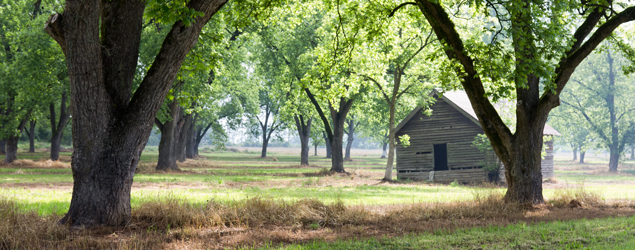Extension Publications for Pecans
Marvin Wells
http://extension.uga.edu/publications/detail.html?number=C1146
Marvin Wells
http://extension.uga.edu/publications/detail.html?number=C898
 Kerry Harrison
http://extension.uga.edu/publications/detail.html?number=B936
Apurba Barman
http://extension.uga.edu/publications/detail.html?number=C1340
Kerry Harrison
http://extension.uga.edu/publications/detail.html?number=B936
Apurba Barman
http://extension.uga.edu/publications/detail.html?number=C1340
 Apurba Barman
http://extension.uga.edu/publications/detail.html?number=C1341
Apurba Barman
http://extension.uga.edu/publications/detail.html?number=C1341
 Marvin Wells
http://extension.uga.edu/publications/detail.html?number=B841
Marvin Wells
http://extension.uga.edu/publications/detail.html?number=B1493
Marvin Wells
http://extension.uga.edu/publications/detail.html?number=B841
Marvin Wells
http://extension.uga.edu/publications/detail.html?number=B1493
 Esendugue Fonsah
http://extension.uga.edu/publications/detail.html?number=AP130-3-10
Marvin Wells
http://extension.uga.edu/publications/detail.html?number=B1557
Esendugue Fonsah
http://extension.uga.edu/publications/detail.html?number=AP130-3-10
Marvin Wells
http://extension.uga.edu/publications/detail.html?number=B1557
 Marvin Wells
http://extension.uga.edu/publications/detail.html?number=B1304
Marvin Wells
http://extension.uga.edu/publications/detail.html?number=B1304

See More Publications
Herbicide Injury of Pecan Trees
(C 1146)
Georgia pecan orchards are often found growing adjacent to fields of annual row crops, timber, and pastures. As a result, the tree canopies of these orchards are susceptible to injury from herbicide drift from the adjacent operations when herbicide applications are made under conditions unsuitable for spraying. Drift may also occur when cotton fields are sprayed with chemical defoliants in the fall. Pecan tree roots often extend into an adjacent row crop fields and can compete with the row crop for available soil, water, and nutrients. Under such conditions, trees may also absorb residual herbicides from the soil in these fields.

Pecan Varieties for Georgia Orchards
(C 898)
The most fundamental step in pecan production is the selection of varieties or cultivars to be planted in the orchard. Planting the wrong pecan variety can be a costly mistake, resulting in considerable expense. This publication includes descriptions and photos of pecan varieties suitable for planting in Georgia orchards.
Drip Irrigation in Pecans
(B 936)
Research conducted on drip-irrigated pecans in Georgia over the past several years has shown that drip irrigation is highly beneficial even in wet years. The objective of drip irrigation is to supply each plant with sufficient soil moisture to meet transpiration demands. Drip irrigation offers unique agronomic, agrotechnical and economic advantages for the efficient use of water.

Home Pecan Tree Management Calendar
(C 1340)
Many residents and properties in Georgia have a significant number of pecan trees or small backyard orchards. While pecan trees in commercial orchards are meticulously managed, noncommercial growers encounter challenges in applying the same level of intensive management to their own pecan trees. This guide provides essential tasks specifically designed for the care of these backyard trees.

Walnut Caterpillars: A Pest of Pecan Orchards
(C 1341)
The walnut caterpillar is native to North America and is mostly distributed in the eastern part of the United States. The larvae feed on the leaves of the plants such as pecan, walnut, butternut, and other species of hickory. Although it is an occasional insect pest, it feeds voraciously. This publication provides growers with information about its biology, damage symptoms, and management options.
Commercial Pecan Spray Guide
(B 841)
This publication provides guidance for insect, disease, and weed control in commercial pecan orchards for 2025.

Organic Pecan Production
(B 1493)
Organic food production is one of the fastest-growing sectors of the American food marketplace and is driven largely by personal health preferences and environmental ethics. Pecan production generates unique challenges to organic production methods in the humid Southeastern U.S. because it is an environment conducive to heavy pressure from insects, diseases, and weeds. Therefore, the foundation of any organic pecan production program in the Southeastern U.S. will be based on selection for pest-resistant cultivars.
2025 Fruits and Tree Nuts Outlook
(AP 130-3-10)
1. Blueberries will continue to lead the Georgia fruits and tree nuts industry in 2025 and subsequent years despite the damage from Hurricane Helene, which is expected to reduce production and yields.
2. The Georgia pecan industry will take several years to recover from the effects of Hurricane Helene, and this natural shortage will keep prices strong.
3. Overall, consumer and grower price indexes will remain strong in 2025.

Hedge Pruning Pecan Trees in the Southeastern U.S.
(B 1557)
As pecan trees grow in an orchard, their tree canopies encroach upon one another, causing excessive shading, which can increase alternate bearing intensity and reduce tree health and orchard profitability. Historically, limb pruning and tree removal have been the most common methods of dealing with this problem, particularly in the low-light environment of the southeastern United States. Mechanical hedge pruning has been used successfully in high-light environments to mitigate the effects of orchard shading and has become the standard method used for this purpose in the arid production regions of the western United States. The southeastern United States is a relatively low-light environment, exhibiting significant cloud cover and atmospheric water vapor throughout the growing season, which can further limit sunlight in orchard systems. Mechanical hedge pruning offers a solution to this problem, which can also help minimize issues related to pecan scab, hurricanes/tropical storms, and alternate bearing.

Cultural Management of Commercial Pecan Orchards
(B 1304)
In order for a commercial pecan operation to be consistently successful, the goal of the operation should be annual production of a moderate crop of high quality nuts, rather than the production of a high yield in a single given year. Culturally, there are several basic factors that will help to promote optimum profitability with a commercial pecan orchard.
